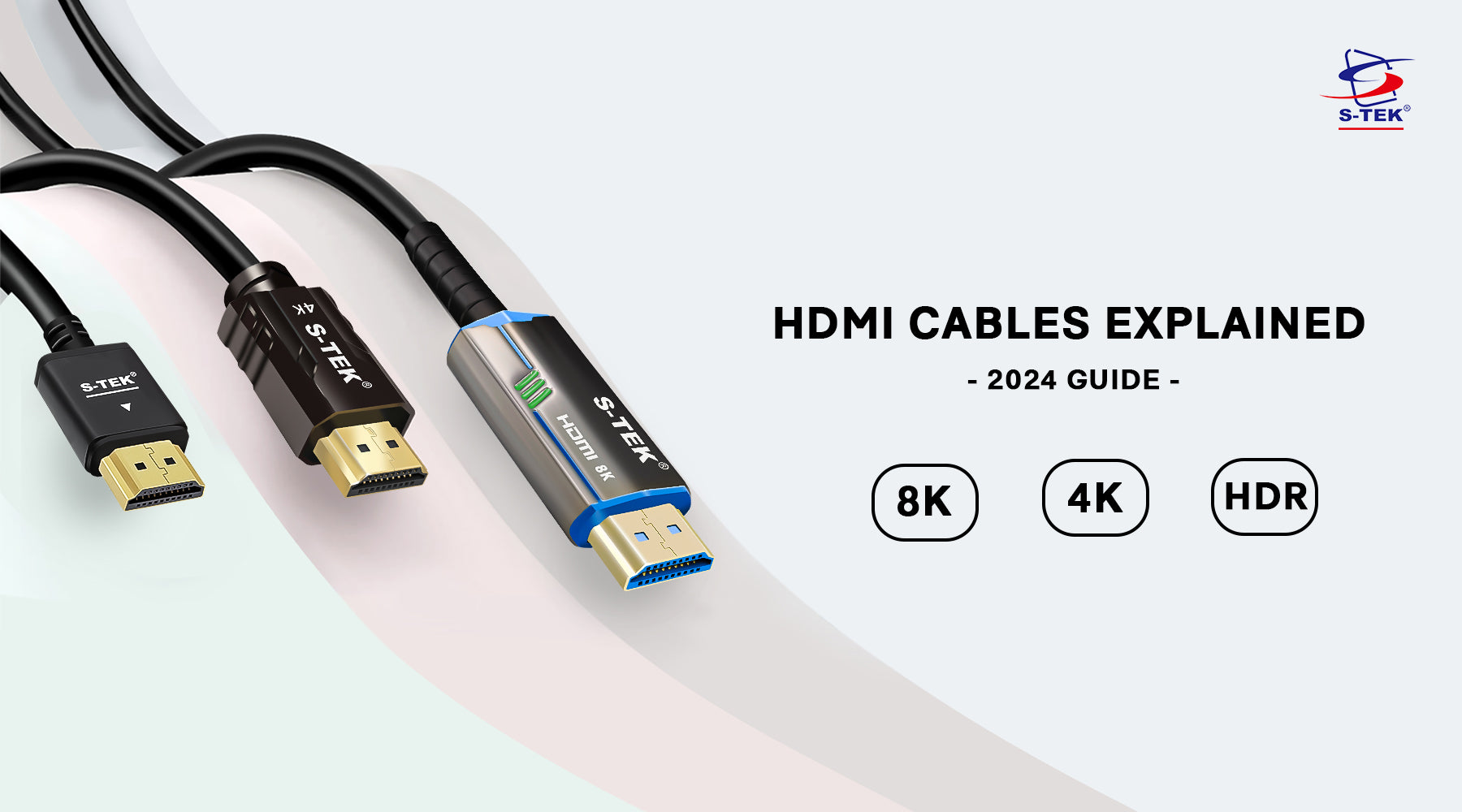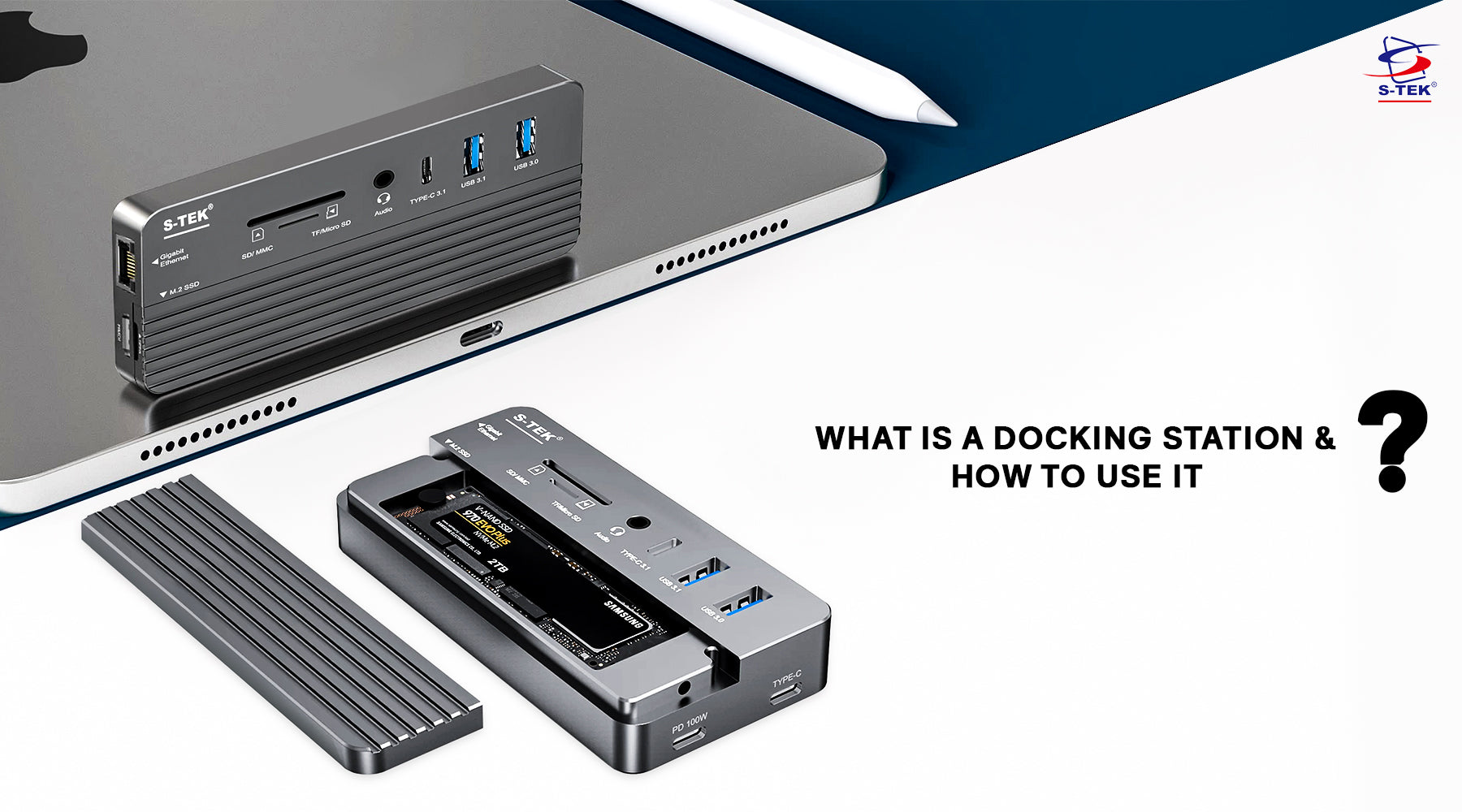
HDMI Cables Explained - 2024 Guide
The way we transfer high-quality audio and video information between devices has been revolutionized by HDMI (High-Definition Multimedia Interface), a cornerstone in the constantly changing world of digital connectivity. With its smooth interface for sending uncompressed digital data, HDMI cables has become widely used in everything from professional settings to our home entertainment systems. But as technology advances, so do the options and variants; this can leave consumers confused about the wide range of alternatives available when it comes to HDMI kinds and connectors.
Fear not—in this thorough tutorial, we'll take you on a journey to demystify HDMI, revealing all of its forms and connectors and giving you the information you need to make wise choices. Essentially, it acts as a medium for sending high-definition audio and video data between multimedia players, gaming consoles, televisions, monitors, and projectors. Beneath this seemingly straightforward idea, however, is a varied ecology of HDMI kinds and connectors, each designed to meet certain demands. This blog series is intended for both seasoned technophiles and interested enthusiasts. Come along as we break down the complexity of HDMI so you can fully utilize this innovative interface., or setting up a high-end audio-visual system.
Types of HDMI Cables
Standard HDMIs
Standard HDMIs are the most popular and extensively utilized type; they are sometimes referred to as Category 1 HDMI cables. With their support for resolutions up to 1080i or 720p, these cables are compatible with the majority of consumer gadgets, including HDTVs, Blu-ray players, cable or satellite boxes, and gaming consoles. High-definition video and multi-channel audio signals can be transmitted using standard HDMI connections, offering a dependable connection for regular home entertainment requirements. The Type A connector, which is the common HDMI connector seen on most devices, is usually present on both ends of them.
High Speed HDMI Cables
Category 2 HDMI cables, also known as high-speed HDMI cables, are made to withstand higher bandwidth needs while sending ultra-high definition audio and video information. For connecting devices that need resolutions higher than 1080p, like 4K UHD TVs, 4K gaming consoles, and high-definition streaming devices, these connections are necessary. The steady and dependable performance of high-speed HDMI cables guarantees the seamless playback of high-definition video without any signal loss or degradation. They frequently have improved shielding and gold-plated connectors to reduce interference and preserve signal integrity over extended distances.
Premium High-speed Cables
The ultimate in HDMI cable technology, premium high-speed cables provide unmatched performance and dependability for demanding audio-visual applications. These cables can support resolutions up to 10K, frame rates up to 120Hz, dynamic HDR (High Dynamic Range), and upgraded audio formats like DTS:X and Dolby Atmos because they have been certified to fulfill the strict requirements of HDMI 2.1 standards. Advanced materials and construction techniques are used in the engineering of premium high-speed cables to guarantee optimal signal fidelity and compatibility with the newest HDMI-enabled devices. To survive the demands of professional installations and upscale home cinema systems, they have sturdy connectors with precisely built contacts and long-lasting cable jackets.
HDMI Fiber Optic Cables
Unlike conventional copper-based cables, HDMI Fiber Optic cables provide an alternate means of long-distance HDMI transmission. These connections work well in situations where traditional cables are problematic or inefficient because they use optical fibers to carry HDMI signals over long distances without experiencing signal loss or degradation. HDMI Fiber Optic cables are ideal for outdoor applications, large venues, and commercial installations since they can carry high-definition video and audio information over hundreds of feet. Even in difficult settings with electromagnetic interference or cable runs through walls, ceilings, or subterranean conduits, they provide outstanding dependability and performance.
Ultra-Slim HDMI Cables
These cables are made for situations when there is a need for maximum aesthetics or minimal space. These cables are perfect for connecting equipment in confined places or wall-mounted installations because of their lightweight and stylish design. Ultra-Slim HDMIs offer resolutions up to 4K UHD and beyond while maintaining high-speed performance despite their thin profile. Without adding bulk or clutter to the setup, they are ideal HDMI for TV, monitors, and projectors to media players, gaming consoles, and streaming devices. Flexible and sturdy cable jackets are a common feature of Ultra-Slim HDMI cables, making installation and routing simple in tight locations without compromising performance or dependability.
What are the Different Type of HDMI Connectors
Whether it's connecting a portable multimedia device, a car infotainment system, or a basic home entertainment system, each type of HDMI connector has its own advantages and is best suited for a particular purpose. By being aware of the variations among different connector types, users may select the right cable and connector for their particular requirements, guaranteeing top performance and compatibility under all conditions. Here are the various HDMI connectors, you should know about:
Type A HDMI Connector
The most widely used type of HDMI connector is the Type A connector, sometimes referred to as the Standard HDMI connector. It is largely compatible with most consumer electronics products, including TVs, Blu-ray players, gaming consoles, and laptops, and has 19 pins grouped in a single row. Standard HDMIs can be used with Type A HDMI connectors, which can send multi-channel audio and high-definition video signals. Their size and form make them immediately identifiable, and they are usually located on the side or back panels of gadgets.
Type C HDMI Connector (Mini HDMI)
A more condensed and lightweight variant of the Type A connector is the Type C HDMI connector, sometimes referred to as the Mini HDMI connector. Its smaller form factor and identical 19-pin layout make it ideal for portable electronics like cellphones, digital cameras, and camcorders. To watch multimedia material on TVs, monitors, or projectors, these devices are typically connected using Type C connectors. They are more space-efficient and provide the same performance as traditional HDMI connectors, which makes them perfect for portable and mobile devices.
Type D HDMI Connector (Micro HDMI)
The smallest type of HDMI connector that is currently available is the Type D HDMI connector, sometimes referred to as the Micro HDMI connector. With an even smaller form factor, it has the same 19-pin arrangement as Type A and Type C connectors, making it ideal for ultra-portable gadgets like tablets, smartphones, and portable media players. With such connectors, users may easily connect their portable devices to larger screens or audio systems by providing high-definition video and audio signals in a lightweight and compact package. The D Type HDMI connectors are compact and adaptable for mobile multimedia applications because they provide the same performance and functionality as conventional HDMI connectors despite their smaller size.
Type E HDMI Connector (Automotive HDMI)
This particular variant is made specifically for usage in automotive applications. It is also referred to as the Automotive HDMI connector. In order to survive the challenging conditions prevalent in cars, it has a ruggedized construction with extra features including locking tabs and improved shielding. High-definition video and audio data are frequently transmitted via Type E HDMI connectors in dashboard displays, rear-seat entertainment systems, and car infotainment systems. They are made to withstand the severe demands placed on dependability and durability in automotive applications, guaranteeing reliable operation and connectivity even in the face of difficult circumstances like vibration, extremely high or low temperatures, and electromagnetic interference.
HDMI Features and More
To sum up, there are a plethora of possibilities available in the broad and varied world of HDMI cables and connections to meet every requirement or purpose. Whether you're connecting your mobile device, home theater system, or car entertainment system, each type of HDMI connector—from the large Type A connector to the little Type D and Type C connectors—has a distinct function. Knowing the distinctions between Standard, High-Speed, and Premium High-Speed HDMIs allows users to choose the best HDMI cable for their setup with knowledge and confidence.
There is an HDMI cable made to fit your demands, whether you want to send high-definition audio and video data over short or long distances. Moreover, the evolution of HDMI technology continues to push the boundaries of what's possible, with advancements such as HDMI Fiber Optic cables and Ultra-Slim HDMIs offering innovative solutions for demanding applications. In the end, whether you're a casual consumer or a professional installer, having a solid understanding of HDMIs and connectors is essential for achieving the best possible audio-visual experience. By staying informed and keeping up with the latest developments in HDMI technology, you can ensure that your devices are always connected with the highest quality signals, delivering stunning visuals and immersive audio for all your entertainment needs.

